1mg
Showing 4401–4450 of 7070 results
-
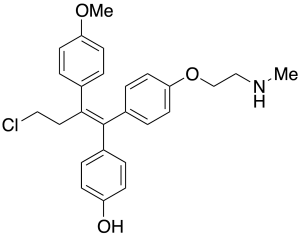
Hydroxymethoxy-N-desmethyl Toremifene (>80%)
$564.94 Add to cart View Product DetailsMolecular Formula : C26 H28 Cl N O3
-
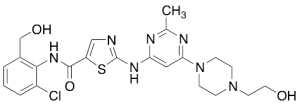
Hydroxymethyl Dasatinib
$176.81 Add to cart View Product DetailsMolecular Formula : C22 H26 Cl N7 O3 S
-

Hydroxynorketamine Hydrochloride
$222.53 Add to cart View Product DetailsMolecular Formula : C12H15Cl2NO2
-
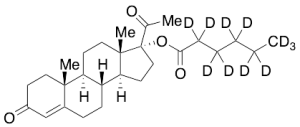
Hydroxyprogesterone Caproate-d11
$87.11 Add to cart View Product DetailsMolecular Formula : C27 D11 H29 O4
-

Hydroxypyruvic Acid Phosphate Barium Salt (>90%)
$214.76 Add to cart View Product DetailsMolecular Formula : C3H5O7P . (3/2Ba)
-
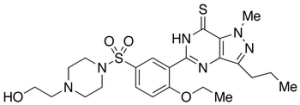
Hydroxythiohomo Sildenafil
$196.65 Add to cart View Product DetailsMolecular Formula : C23 H32 N6 O4 S2
-
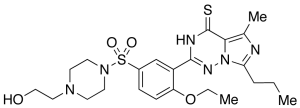
Hydroxythiovardenafil
$181.99 Add to cart View Product DetailsMolecular Formula : C23H32N6O4S2
-
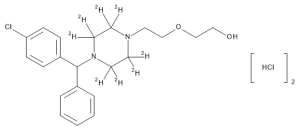
Hydroxyzine-d8 Dihydrochloride
$222.53 Add to cart View Product DetailsMolecular Formula : C21 D8 H19 Cl N2 O2 . 2 Cl H
-
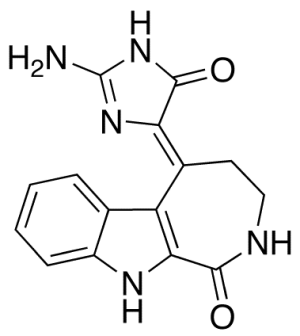
Hymenialdisine Analogue #1
$214.76 Add to cart View Product DetailsMolecular Formula : C15 H13 N5 O2
-
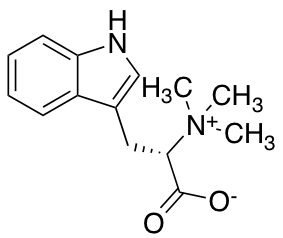
Hypaphorine
$78.49 Add to cart View Product DetailsMolecular Formula : C14H18N2O2
-

Hypericin
$72.45 Add to cart View Product DetailsMolecular Formula : C30 H16 O8
-

Hypoglycine B
$445.91 Add to cart View Product DetailsMolecular Formula : C12 H18 N2 O5
-

Hypotaurine
$50.89 Add to cart View Product DetailsMolecular Formula : C2H7NO2S
-
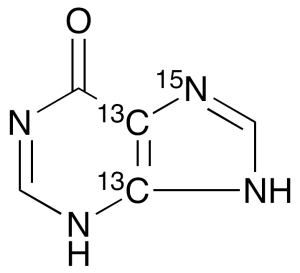
Hypoxanthine-13C2,15N
$213.04 Add to cart View Product DetailsMolecular Formula : 13C2 C3 H4 15N N3 O
-

Hypoxanthine-13C2,15N (Mixture) Please see H998504
$209.59 Add to cart View Product DetailsMolecular Formula : C3¹³C2H4N3¹⁵NO
-

Iberin
$60.38 Add to cart View Product DetailsMolecular Formula : C5 H9 N O S2
-
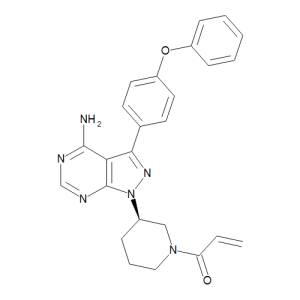
Ibrutinib
$63.83 Add to cart View Product DetailsMolecular Formula : C25 H24 N6 O2
-

Ibrutinib-d4 (Major)
$271.69 Add to cart View Product DetailsMolecular Formula : C25H20D4N6O2
-
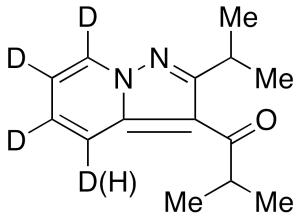
Ibudilast-d3 (Major)
$176.81 Add to cart View Product DetailsMolecular Formula : C14 D4 H14 N2 O
-
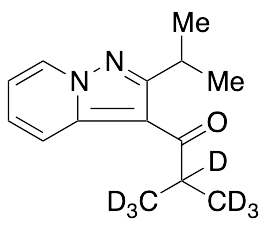
Ibudilast-d7
$220.80 Add to cart View Product DetailsMolecular Formula : C14H11D7N2O
-

Ibufenac Acyl-Beta-D-Glucuronide
$273.41 Add to cart View Product DetailsMolecular Formula : C18H24O8
-

Ibuprofen Acyl-Beta-D-glucuronide (mixture of diastereomers)
$107.81 Add to cart View Product DetailsMolecular Formula : C19 H26 O8
-
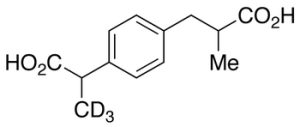
Ibuprofen Carboxylic Acid-d3 (Mixture of Diastereomers)
$222.53 Add to cart View Product DetailsMolecular Formula : C13H13D3O4
-

Ibuprofen-13C,d3
$112.99 Add to cart View Product DetailsMolecular Formula : C1213CH15D3O2
-
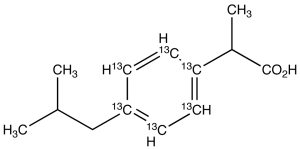
Ibuprofen-13C6
$259.61 Add to cart View Product DetailsMolecular Formula : C713C6H18O2
-
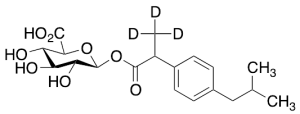
Ibuprofen-d3 Acyl-Beta-D-glucuronide (mixture of diastereomers)
$296.70 Add to cart View Product DetailsMolecular Formula : C19 D3 H23 O8
-
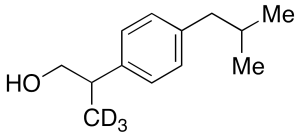
Ibuprofen-d3 Alcohol
$257.89 Add to cart View Product DetailsMolecular Formula : C13H17D3O
-
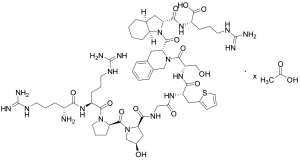
Icatibant Acetate
$156.11 Add to cart View Product DetailsMolecular Formula : C59 H89 N19 O13 S . x(C2 H4 O2)
-
![Icatibant Peptide Fragment [1-8] TFA Salt](https://advatechgroup.com/wp-content/uploads/sys-masterimageshd6h7a10611017449502R181110-300x221.png)
Icatibant Peptide Fragment [1-8] TFA Salt
$78.49 Add to cart View Product DetailsMolecular Formula : C44H64N14O11S • x C2HF3O2
-
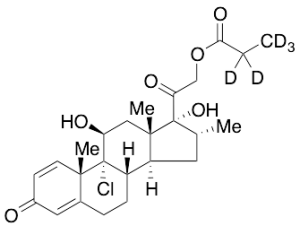
Icomethasone 21-Propionate-d5
$166.46 Add to cart View Product DetailsMolecular Formula : C25 D5 H28 Cl O6
-
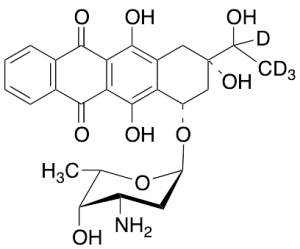
Idarubicinol-d4 (Mixture of Diastereomers) (>80%)
$4,033.05 Add to cart View Product DetailsMolecular Formula : C26 D4 H25 N O9
-
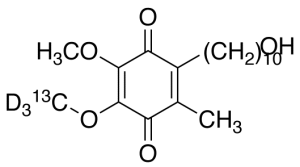
Idebenone-13C,d3
$232.01 Add to cart View Product DetailsMolecular Formula : C1813CH27D3O5
-
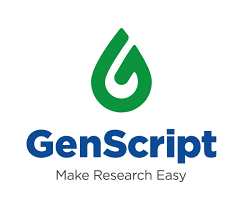
iFluor488-Protein L
$174.23 Add to cart View Product DetailsProtein L is a cell surface protein from Peptostreptoccocus magnus that binds to the variable light chains (kappa chain) of immunoglobulins without interfering with antigen binding. In contrast to IgG-binding proteins, such as protein A and protein G, which bind to the Fc region of immunoglobulins, protein L can be used for the detection and purification of mammalian kappa light chain antibodies of all classes. Since no part of the heavy chain is involved in the binding interaction, Protein L binds a wider range of antibody classes than Protein A or G. Protein L binds to representatives of all antibody classes, including IgG, IgM, IgA, IgE and IgD. Single chain variable fragments (scFv) and Fab fragments also bind to Protein L.
-

iFluor647-Protein L
$174.23 Add to cart View Product DetailsProtein L is a cell surface protein from Peptostreptoccocus magnus that binds to the variable light chains (kappa chain) of immunoglobulins without interfering with antigen binding. In contrast to IgG-binding proteins, such as protein A and protein G, which bind to the Fc region of immunoglobulins, protein L can be used for the detection and purification of mammalian kappa light chain antibodies of all classes. Since no part of the heavy chain is involved in the binding interaction, Protein L binds a wider range of antibody classes than Protein A or G. Protein L binds to representatives of all antibody classes, including IgG, IgM, IgA, IgE and IgD. Single chain variable fragments (scFv) and Fab fragments also bind to Protein L.
-
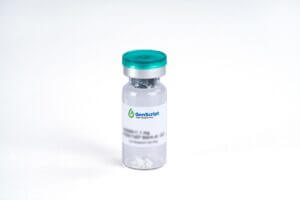
IFN-α 2a, Human
$405.38 Add to cart View Product DetailsInterferon-Alpha 2a (IFN-Alpha 2a), Human produced by leukocytes is a member of Interferon family. IFN-alpha is mainly involved in innate immune response against a broad range of viral infections. IFN-alpha 2 has three acid stable forms (a,b,c) signaling through IFNAR2. IFN-alpha 2a shares 99.4% , 98.8% aa sequence identity with IFN-alpha 2b and 2c respectively. IFN-alpha contains four highly conserved cysteine residues which form two disulfide bonds, one of which is necessary for biological activity.
-

IFN-α 2b, Human
$931.50 Add to cart View Product DetailsInterferon-Alpha 2b (IFN-Alpha 2b) produced by leukocytes is a member of Interferon family. IFN-alpha is mainly involved in innate immune response against a broad range of viral infections. IFN-alpha 2 has three acid stable forms (a,b,c) signaling through IFNAR2. IFN-alpha 2b shares 99.4% aa sequence identity with both IFN-alpha 2a and 2c. IFN-alpha contains four highly conserved cysteine residues which form two disulfide bonds, one of which is necessary for biological activity.
-

IFN-γ, Human
$487.31 Add to cart View Product DetailsHuman Interferon gamma (hIFN-γ) is amacrophage‐activating factor and the lone member of Interferon type II.The active form of IFN-γ is an antiparallel dimer that interacts with the receptor IFN-γR1 and sets off IFN-γ/JAK/STAT pathway. IFN-γ signaling does diverse biological functions primarily related to host defense and immune regulation, including antiviral and antibacterial defense, apoptosis, inflammation, and innate and acquired immunity. While IFN-γ–induced inflammatory cascade summons a variety of immune‐related cell types, such as macrophages, natural killer (NK) cells and cytotoxic T lymphocytes (CTLs), IFN-γ is also implicated in resistance to NK cell and CTL responses and in immune escape in a variety of cancers.
-

IFN-γ, Human(CHO-expressed)
$521.81 Add to cart View Product DetailsHuman Interferon gamma (hIFN-γ) is amacrophage-activating factor and the lone member of Interferon type II. The active form of IFN-γ is an antiparallel dimer that interacts with the receptor IFN-γR1 and sets off IFN-γ/JAK/STAT pathway. IFN-γ signaling does diverse biological functions primarily related to host defense and immune regulation, including antiviral and antibacterial defense, apoptosis, inflammation, and innate and acquired immunity. While IFN-γ–induced inflammatory cascade summons a variety of immune-related cell types, such as macrophages, natural killer (NK) cells and cytotoxic T lymphocytes (CTLs), IFN-γ is also implicated in resistance to NK cell and CTL responses and in immune escape in a variety of cancers.
-

IFN-γ, Mouse
$414.00 Add to cart View Product DetailsSharing 41% sequence identity with human Interferon gamma (hIFN–γ), mouse IFN gamma (mIFN–γ)is a macrophage-activating factor.The active form of IFN–γ is an antiparallel dimer that sets off IFN–γ/JAK/STAT pathway. IFN–γ signaling does diverse biological functions primarily related to host defense and immune regulation, including antiviral and antibacterial defense, apoptosis, inflammation, and innate and acquired immunity.While IFN–γ–induced inflammatory cascade summons a variety of immune-related cell types, such as macrophages, natural killer (NK) cells and cytotoxic T lymphocytes (CTLs), IFN–γ is also implicated in resistance to NK cell and CTL responses and in immune escape in avariety of cancers.
-

IFN-γ, Rat
$836.63 Add to cart View Product DetailsInterferon-gamma (IFN-γ), also known as Type II interferon or immune interferon, is a cytokine produced primarily by T-lymphocytes and natural killer cells. The protein shares no significant homology with IFN-β or the various IFN-α family proteins. Mature IFN-γ exists as noncovalently-linked homodimers. It shares high sequence indentity with mouse IFN-γ (86 %). IFN-γ was originally characterized based on its antiviral activities. The protein also exerts antiproliferative, immunoregulatory and proinflammatory activities and is thus important in host defense mechanisms. IFN-γ induces the production of cytokines, upregulates the expression of class I and II MHC antigens, Fc receptor and leukocyte adhesion molecules. It modulates macrophage effector functions, influences isotype switching and potentiates the secretion of immunoglobulins by B cells. Additionally, IFN-γ augments TH1 cell expansion and may be required for TH1 cell differentiation.
-

IFN-γ, Rat (CHO-expressed)
$521.81 Add to cart View Product DetailsInterferon-γ (IFN-γ), also known as Type II interferon or immune interferon, is a cytokine produced primarily by T-lymphocytes and natural killer cells. The active form of IFN-γ is an antiparallel dimer that interacts with the receptor IFN-γR1 and sets off IFN-γ/JAK/STAT pathway. IFN-γ signaling does diverse biological functions primarily related to host defense and immune regulation, including antiviral and antibacterial defense, apoptosis, inflammation, and innate and acquired immunity. While IFN-γ–induced inflammatory cascade summons a variety of immune-related cell types, such as macrophages, natural killer (NK) cells and cytotoxic T lymphocytes (CTLs), IFN-γ is also implicated in resistance to NK cell and CTL responses and in immune escape in a variety of cancers.
-

IFN-λ1, Human
$2,018.25 Add to cart View Product DetailsIL-28A, IL-28B, and IL-29, also named interferon-λ2 (IFN-λ2), IFN-λ3, and IFN-λ1, respectively, are newly identified class II cytokine receptor ligands that are distantly related to members of the IL-10 family (11-13% aa sequence identity) and the type I IFN family (15-19% aa sequence identity). The expression of IL-28A, B, and IL-29 is induced by virus infection or double-stranded RNA. All three cytokines exert bioactivities that overlap those of type I IFNs, including antiviral activity and up-regulation of MHC class I antigen expression. The three proteins signal through the same heterodimeric receptor complex that is composed of the IL-10 receptor β (IL-10 Rβ) and a novel IL-28 receptor α (IL-28 Rα, also known as IFN-λR1). Ligand binding to the receptor complex induces Jak kinase activation and STAT1 and STAT2 tyrosine phosphorylation.
-

Ifosfamide-d4
$221.66 Add to cart View Product DetailsMolecular Formula : C7 2H4 H11 Cl2 N2 O2 P
-

IGF-BP-2, His, Human
$1,863.00 Add to cart View Product DetailsIGF-BP-2, also known as Insulin-like growth factor-binding protein 2, IBP-2 and BP-2, is a cysteine-rich secreted protein belonging to the IGF-binding protein superfamily. It is expressed by the central nervous system, bone cells and reproductive tissues. IGF-BP-2 binds to both IGF-I and IGF-II, with a much higher binding affinity to IGF-II than IGF-I. IGF-BP-2 has been shown to inhibitand stimulate the growth promoting effects of IGFs, thus serving as a regulator for IGF distribution, function and activity.
-

IGF-BP-3, Human
$2,018.25 Add to cart View Product DetailsIGF-BP3 is a 30 kDa cysteine-rich secreted protein. It is the major IGF binding protein present in the plasma of human and animals and it is also found in α-granules of platelets. In addition to its ability to modulate the activity of IGF-I and IGF-II, IGF-BP3 exerts inhibitory effects on follicle stimulating hormone (FSH) activity. Decreased plasma levels of IGF-BP3 often results in dwarfism, whereas elevated levels of IGF-BP3 may lead to acromegaly. The expression of IGF-BP3 in fibroblasts is stimulated by mitogenic growth factors such as Bombesin, Vasopressin, PDGF, and EGF.
-

IGF-BP-4, His, Human
$1,863.00 Add to cart View Product DetailsInsulin-like growth factor-binding protein 4 (IGF-BP-4), also known as IBP-4, is a secreted glycoprotein belonging to the IGFBP family. IGF-BP-4 is produced by osteoblasts, epidermis, ovarian follicles and other tissues. It binds both insulin-like growth factor (IGF) I and II, and it circulates in the plasma in both glycosylated and non-glycosylated forms. IGF-BP-4 prolongs the half-life of the IGFs and has been shown to inhibit or stimulate the growth-promoting effects of the IGFs. Pregnancy Associated Plasma Protein A (PAPP-A) proteolytically cleaves IGF-BP-4 and reduces its affinity to bind IGFs, and thus serves as an important regulator of IGF-BP-4 function.
-

IGF-I, Bovine
$120.75 Add to cart View Product DetailsInsulin-like growth factor 1 (IGF-1), also called Somatomedin, is a hormone similar in molecular structure to insulin but has a much higher growth-promoting activity. IGF-1 consists of 70 amino acids in a single chain with three intramolecular disulfide bridges. IGF-1 may be a physiological regulator of [1-14C]-2-deoxy-D-glucose (2DG) transport and glycogen synthesis in osteoblasts. It is able to stimulate glucose transport in bone-derived osteoblastic (PyMS) cells and is effective at much lower concentrations than insulin, not only regarding glycogen and DNA synthesis but also with regard to enhancing glucose uptake. It may also play a role in synapse maturation.
-
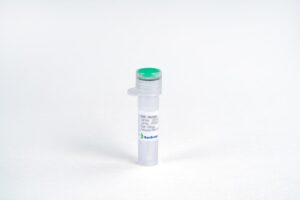
IGF-I, Human
$120.75 Add to cart View Product DetailsInsulin-like growth factor I (IGF-I) also known as Somatamedin C is a hormone similar in molecular structure to insulin. Human IGF-I has two isoforms (IGF-IA and IGF-IB) which are differentially expressed by various tissues. Mature human IGF-I shares 94% and 96% aa sequence identity with mouse and rat IGF-I, respectively. Both IGF-I and IGF-II (another ligand of IGF) can signal through the IGF-I receptor (IGFIR), but only IGF-II can bind the IGF-II receptor (IGFIIR/ Mannose-6-phosphate receptor). IGF-I plays an important role in childhood growth and continues to have anabolic effects in adults.
-

IGF-I, Mouse
$612.38 Add to cart View Product DetailsInsulin-like Growth Factor I (IGF-I) is a single chain 7 kDa growth-promoting polypeptide originally identified as somatomedin-c. It belongs to the IGF family of peptides, which also includes IGF-II and insulin. The gene expression of IGF-I is mainly regulated by Growth Hormone, and IGF-I executes its functions via signaling through transmembrane tyrosine receptors (IGF Receptors). Most circulating IFG-I is associated with the IGF Binding Protein 3 (IGFBP-3), and the IGFBPs may inhibit the actions of IGFs by competing against the IGF Receptors. IGF-I is active in post-natal and adult animals, and is crucial for somatic growth, as IGF-I null mice show marked retardation in utero. IGF-I is involved in carcinogenesis, and related to prostate cancer as well.
-

IGF-I, Rat
$612.38 Add to cart View Product DetailsInsulin-like Growth Factor I (IGF-I) is a single chain 7 kDa growth-promoting polypeptide originally identified as somatomedin-c. It belongs to the IGF family of peptides, which also includes IGF-II and insulin. The gene expression of IGF-I is mainly regulated by Growth Hormone, and IGF-I executes its functions via signaling through transmembrane tyrosine receptors (IGF Receptors). Most circulating IFG-I is associated with the IGF Binding Protein 3 (IGFBP-3), and the IGFBPs may inhibit the actions of IGFs by competing against the IGF Receptors. IGF-I is active in post-natal and adult animals, and is crucial for somatic growth, as IGF-I null mice show marked retardation in utero. IGF-I is involved in the carcinogenesis, and related to the prostate cancer as well.






